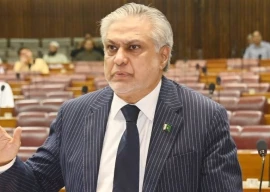
Despite deep cuts in interest rates by the State Bank of Pakistan, profits continued to grow at the Bank of Khyber, crossing the Rs1 billion mark for the first time in the bank’s history, largely due to a substantial increase in its deposit base, lower provisioning on its loan portfolio, as well as revenues from its handling of remittances.
The only bank headquartered in Peshawar announced its earnings on Monday, reporting that its profits had jumped a respectable 23.3% to Rs1.1 billion for the calendar year 2012. The bank revenues – defined as its net interest income combined with its non-interest income – rose by 14.2% to reach Rs3.6 billion.
The Bank of Khyber appears to have benefited from a healthier loan portfolio, which required lower provisioning for bad loans. Provisioning against bad debts declined by about 28% to just Rs178 million. Its loan book increased by about 12.1% during the first nine months of 2012 to reach Rs66 billion. Unlike many of the largest banks in Pakistan, most of the increase in Bank of Khyber’s lending portfolio came through lending to the private sector, which grew by 18.7% during that period.
Meanwhile, the bank’s deposit base continued to grow at a healthy clip. While the bank has yet to publish its balance sheet for the full year 2012, its deposits grew by 28.4% to Rs58.5 billion during the first nine months of last year. That growth in deposits helped the bank continue to increase its net interest income – the difference between what it charges its lending clients and what it pays out to its depositors – by about 8.3% during 2012, a year during which the central bank cut the benchmark discount rate by 200 basis points.
The bank also saw its non-interest income rise, in large part due to a whopping 152% increase in income from dealing in foreign currency. At the previous year’s earnings announcement, CEO Bilal Mustafa had identified targeting the remittance business as one of its core growth strategies. The results from this year suggest that the bank is at least partially having some success with that line of business.
Published in The Express Tribune, March 5th, 2013.
Like Business on Facebook to stay informed and join in the conversation.
COMMENTS (1)
Comments are moderated and generally will be posted if they are on-topic and not abusive.
For more information, please see our Comments FAQ













































a good read